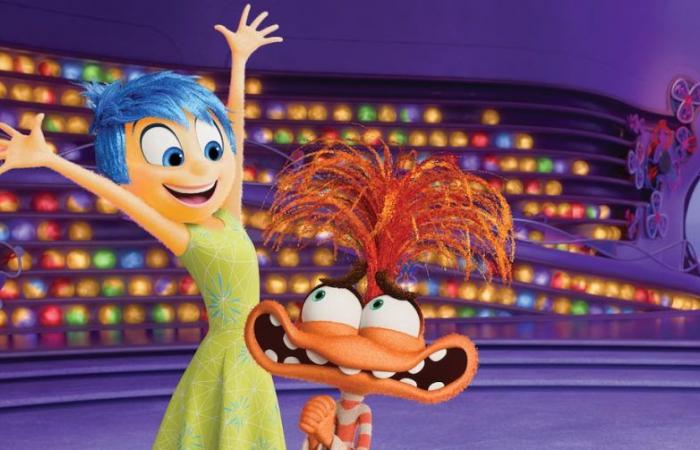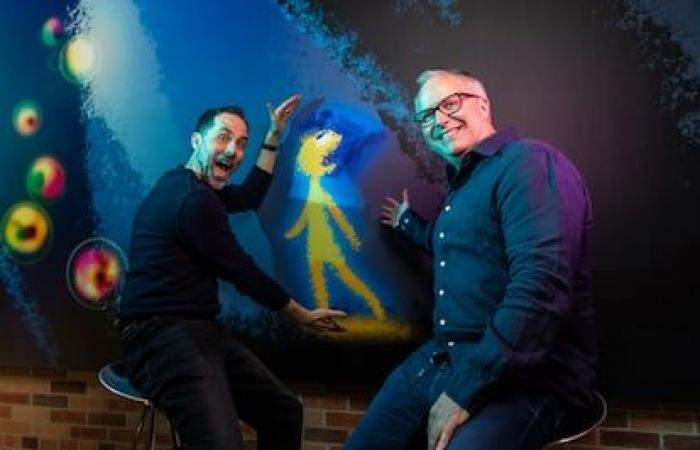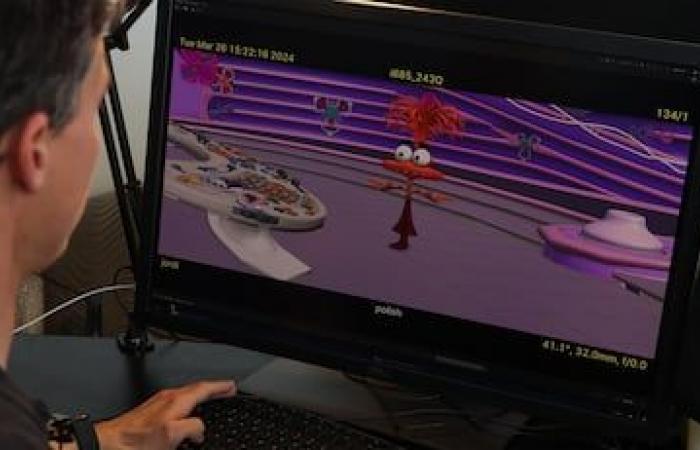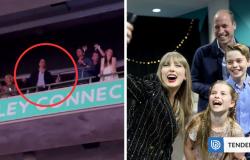As often happens with stratospheric idols or long-awaited experiences, when visiting an idealized place for the first time it is common for the illusion to dissolve until it becomes a shock of reality. It is typical in the headquarters of the most admired companies, which are generally just gray buildings with bad machine coffee. But if any company knows how to maintain the illusion from start to finish, even in the coffee, it is Pixar. The minds that have created Nemo and Dory, Buzz and Woody, grumpy Carl from Up or the Incredible family could not live in a boring cement block. Creativity bubbles in every square centimeter of his offices in Emeryville, in the San Francisco Bay area, which these weeks adorn with posters, drawings and figures of his latest creations: the new emotions of the highly anticipated sequel to Reverse (Inside Out or, in Latin America, Intensely). Nine years after the first part, which won the Oscar for best animated feature film, triumphed at Cannes and grossed 860 million dollars (about 800 million euros) in the summer of 2015, the new installment has arrived in US theaters. USA and other countries last Friday (in Spain it will do so on Wednesday the 19th) with Riley’s mind as a backdrop and with a star as unexpected a decade ago as it is indisputable today: anxiety.
A teenage Riley—full of braces, grains and dramas—and their emotions are the protagonists of the hallways and cubicles of many of the employees of the company, which employs just under 1,200 people (at the end of May they laid off 14% of the workforce, about 175 employees; Disney has 7,000 jobs destroyed). Its constant presence is a good reflection of the great expectation that the film has generated, inside and outside this campus, where a large Luxo lamp welcomes a picturesque collection of glass and exposed brick buildings between which a field is interspersed sport or a swimming pool. EL PAÍS went to the headquarters at the end of March to see the place and chat with its workers: with the director and mind behind the original, Pete Docter; the person responsible for the second, Kelsey Mann; the producer of the latter, Mark Nielsen; and with one of the few Spaniards who have participated in this project, the animator Jordi Oñate Isal.
It was Docter—one of the factory’s first animators and, today, one of its biggest stars—who, in 2015 and inspired by his daughter Elie, created Riley, the protagonist of the first part, and brought her emotions to life how these were self-managed in the girl’s mind. He has not been part of the development of this second one, although in a talk with the press in the auditorium of the main building – named after Steve Jobs – he claimed to feel “excited” about its arrival in cinemas. After the “significant impact” the first one had, according to Docter, “it was time to explore the next chapter.” And the situation lends itself to it: now Riley is a teenager and there is much more in her head than Joy, Sadness, Disgust, Anger and Fear.
Four other emotions land like an elephant in a china shop to become the stars of the hour and a half of footage: Envy, Shame (although in English it would be translated as embarrassment), Ennui (in French in the original, translated into Spanish as Ennui or Boredom) and above all Anxiety, the true plane-stealer of the feature film and, as those responsible well know, who will take the memes from the streets, but also the sales of products, from bowls of popcorn in cinemas to sweatshirts and dolls. The choice of Ansiedad—orange, with bulging eyes, nervous laughter and crazy hair; in English dubbed by Maya Hawke; in Spain by Michelle Jenner—headlining is not trivial, at a time when the conversation about mental health is more on the table than ever. “It’s great that this movie talks about anxiety, and we hope it says things that are really meaningful, but also funny. “We are really excited,” the director and producer acknowledge.
In this new life for Riley, which has taken almost a decade to come together, there were many more emotions, up to two dozen, which were eliminated – although there is always some surprise left in the final footage, such as the stellar appearance of the old and beloved Nostalgia. to polishing the final characters and, just as important, the backdrop in which they move. The director says that for the 2015 film they had created a large scenario of the girl’s mind, but that “they could only see a little bit” of it and that now they wanted to continue exploring it. “I made a list of all the sequences I loved and those I didn’t love so much, and I thought about why. The ones she loved had something in common: they opened new doors to a world she didn’t know. The others just repeated it, returning to those places. And I wanted to go to new parts of the mind that she had never gone to. The coolest thing about being a director is that I say: ‘Let’s go in there’… and someone walks in,” he admits. The producer picks up the thread: “There are so many places to go in the mind… And the film takes you to many. You’ve already seen some. There are more, places that will end up being explored by those emotions. For example, the belief system is another important place that didn’t exist in the first one, where it is born into what Riley believes and you can hear what is inside her. “And that connects with the headquarters,” continues the director. “That little elevator that goes up in the first movie that you didn’t know was an elevator? Because we came up with the idea [de lo que era] after. “It’s been a lot of fun reconnecting the two films.”
Those responsible for the film assure that they have had total creative freedom for it. “The only thing I asked from the beginning is that they allow me to introduce new emotions and connect them with the previous film,” says the director. They asked him where they came from, how they joined the previous one. And then, from the very beginning, he was clear that he wanted to work with Meg LeFauve, screenwriter of the first and, now, of this second, and with whom he already made Arlo’s Journeyin 2015, precisely at the same time when Reverse. Together they decided how to manage the life of those emotions, how to introduce them into the universe of those first five, so beloved.
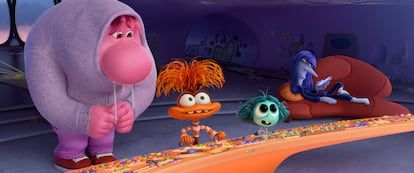
Jordi Oñate Isal has been working as an animator at Pixar for 13 years and is one of the few Spaniards in the company, and of the 375—all human; there is no artificial intelligence behind this film—they have been part of the project for about three years. He is the one who makes the characters walk or laugh following the director’s instructions, and he recognizes that Ansiedad has been the character that has cost the most to bring to life. “It is a somewhat difficult emotion to do and we have had to elaborate it. Because, what exactly does anxiety mean? “He reflects, exposing the difficulty of turning into a person something that is an emotion, an idea, an intangible. “We have made it thinking about the performance of the character. It is the one that has had the most complexity.” But also, being a challenge, the most interesting. “It has been the most fun. We are always trying to do new things and the characters that are always laughing or that are easy to do no longer pose as many challenges for us, they are more boring for the animators.”
With the process almost finished, Mann, the director, and Nielsen, the producer, explained, half jokingly, half seriously, that if they had to define themselves by any of their emotions they were “between Joy and Anxiety.” Too much responsibility, too many expectations? They fantasize about the idea that both the expectant public and the animation giant will come to fruition with this film, the 28th in the company’s almost 30 years. It is his great bet, which, without a shadow of Barbenheimers on the horizon, it is destined to be one of the films of the summer of 2024: “Hopefully, we would like nothing more, it sounds very good,” they say at the same time. “All we can control is our part, obviously we have tried to create a universal film, and hopefully it meets all expectations.”
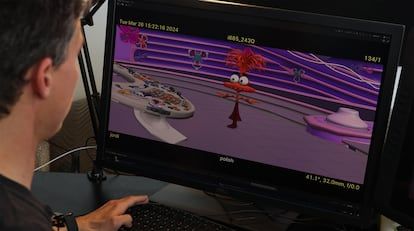
Success, more than wanted, is beginning to be necessary. Since before the pandemic things have not been going well for Pixar. Beyond layoffs, his films have often gone unnoticed, and have not even been released in movie theaters. toy story 4in 2019, gave good results, but only the most fans will remember the following titles from the house: Onward, Soul, Lucas, Grid or even the unexpectedly unsuccessful Lightyear, which barely exceeded the 200 million it cost at the global box office. Some little gems (like the last one, Elementary, nominated for an Oscar), many unnoticed. “We are following the story of Reverse, which was very loved. Nine years ago she moved the world and perhaps made people think differently,” reflects Nielsen. “And that is why there is a responsibility when it comes to making a sequel.”
“You have to make something that has something to tell, beautiful, super entertaining, fun, all the things that we love and that are in Pixar movies. Yes, but also have a deep meaning, something that people talk about and that they can take home,” argues the person who also produced that first one. “Especially teenagers,” Mann concludes. “If I had had a movie like that at my age…,” he says, saying at the press conference that he had dealt with anxiety “since adolescence,” and that in this movie he sought to turn it around so as not to. treating her “as that kind of villain, antagonist” with which she is usually associated. “My anxiety has also helped me, he tells me: ‘You have to be on stage in front of all of them, you have to be ready, be sure.’ Like anger, which in small doses can be helpful, until it goes too far and is too much. “I always wanted the movie to be about learning how to deal with anxiety.”
All the culture that goes with you awaits you here.
Subscribe
Babelia
The literary news analyzed by the best critics in our weekly newsletter
RECEIVE IT
Subscribe to continue reading
Read without limits
_

